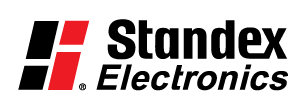Introduction
Magnet interaction is the primary use for a reed switch in a sensing application. In other words, pairing a permanent magnet with a reed switch is referred to as a reed sensor. Likewise, reed switch actuation mostly occurs using a permanent magnet as the actuator. The magnet is always the moving object in the sensing area. However, the reed switch is in a fixed position.
Additionally, it is important to understand how a sensor operates using magnet interaction. Reed sensors work in one of four contact states.
Switch Contact States
- Normally Open (Form A) – The normally open state is where the contacts rest in an open mode. The reed switch consumes no power in the open state.
- Normally Closed (Form B) – A normally closed contact state refers to the switch contacts resting in a closed position.
- Changeover (Form C) – Changeover occurs when a normally closed contact makes or opens before a normally open contact breaks or closes.
- Latching / Bistable (Form E) – A latching or bistable mode is a more advanced use for the sensor. The contacts can either be in a closed or open state. The methods used depends on the actual application. A permanent magnet is used to change the contact state by reversing the magnetic polarity.
Before we explore each of these ways, it is important to understand the switch magnetic fields. Various magnet positions and movement will cause the reed switch’s on/off domain to change. Furthermore, the actual closure and opening points will vary considerably for different Reed switches and magnet sizes and strengths.
The below reed switch actuation examples show a small sample of sensing applications. These examples mainly focus on using normally open and normally closed contact applications.
Magnet Literature
Magnet Specifications
Magnets are available in multiple specifications on the market. Almost all dimensions and geometries can be realized. To activate the reed switch a magnet (magnet field) is needed. The different magnet materials have either more positive or negative specifications, depending on the dimension and geometries as well as on the environment. Most preferred and used forms are cylinders, rectangles, rings and discs. Depending on the different requirements, magnets can be magnetized in many different ways (See Illustration).
Furthermore each magnet material has a different magnet force as well as a different flux density. In addition to dimension and material, other factors exist that define the energy of a magnet. These are mounting position, environment and other magnetic field witch influence the interaction between reed sensor/switch and magnet. In applications were a magnet is used to activate a reed sensor/switch, the environmental temperature needs to be considered (in the application as well as in storage). High temperatures can cause irreversible damage and will have heavy impact on the magnetic force and the long term stability. AlNiCo magnets are best suitable for applications up to 450°C.

Reed Switch And Magnet Actuation
| Click To Animate | Actuator Type | Position | Movement | Actuation(s) | Contact Form/Mode
|
|---|
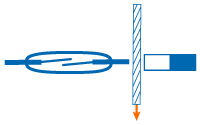
| Bar Magnet Magnetic Shield | Fixed | Perpendicular | Single | Form A (Normally Open)
|
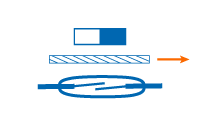
| Bar Magnet Magnetic Shield | Fixed | Parallel | Single | Form A (Normally Open)
|
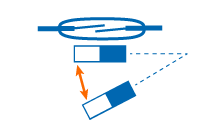
| Bar Magnet | Parallel | Pivot | Single | Form A (Normally Open)
|
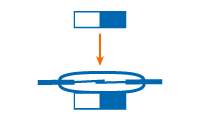
| Bar Magnet | Parallel | Perpendicular | Single | Form B (Normally Closed)
|
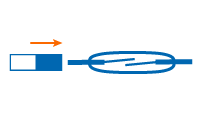
| Bar Magnet | Parallel | Parallel | Single | Form A (Normally Open)
|
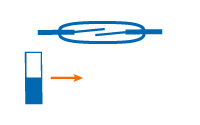
| Bar Magnet | Perpendicular | Parallel | Multiple | Form A (Normally Open)
|
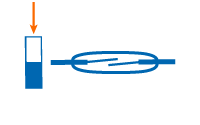
| Bar Magnet | Perpendicular | Perpendicular | Single | Form A (Normally Open)
|
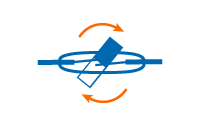
| Bar Magnet | Above | Rotary | Multiple | Form A (Normally Open)
|
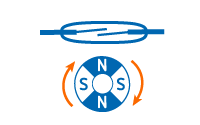
| Ring Magnet | Adjacent | Rotary | Multiple | Form A (Normally Open)
|
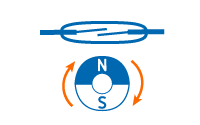
| Ring Magnet | Adjacent | Rotary | Multiple | Form A (Normally Open)
|
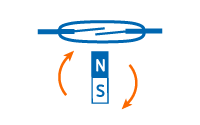
| Bar Magnet | Adjacent | Rotary | Multiple | Form A (Normally Open)
|
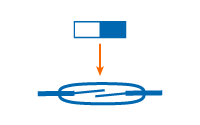
| Bar Magnet | Parallel | Parallel | Single | Form A (Normally Open)
|
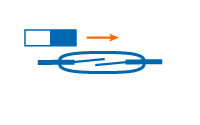
| Bar Magnet | Parallel | Parallel | Multiple | Form A (Normally Open)
|
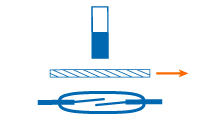
| Bar Magnet / Magnetic Shield | Fixed | Parallel | Single | Form A (Normally Open)
|
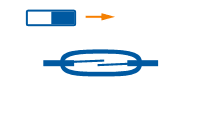
| Bar Magnet | Parallel | Parallel | Single | Form A (Normally Open)
|
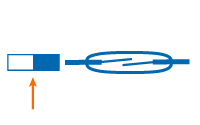
| Bar Magnet | Parallel | Perpendicular | Single | Form A (Normally Open)
|
